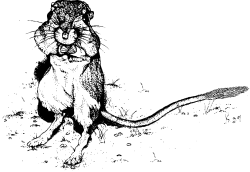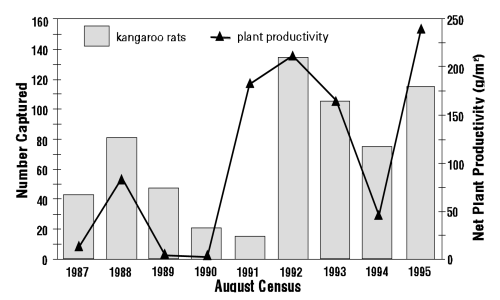By Sky Ulep
 |
| Courtesy of Konica Minolta |
Rats!
Commonly treated as pests of the planet, rats have been given a bad rap as vermin out to spread disease and distress. But not all rodents are as rotten as they seem.
 |
| Courtesy of Konica Minolta |
 |
| Courtesy of Konica Minolta |
Giant kangaroo rat habitat is primarily desert and dry
grassland. However, in recent years most of its habitat has been the victim of
habitat degradation and fragmentation due to agricultural, urban, and industrial use.
Up until the 1950s, the giant kangaroo rat was spread over
hundreds of thousands of acres of continuous habitat in the western San Joaquin
Valley, Carrizo Plain, and Cuyama Valley.
However, due to fragmentation, this
species has been divided into six major geographic units: “(1) the
Ciervo-Panoche Region in western Fresno and eastern San Benito Counties; (2)
Kettleman Hills in southwestern Kings County; (3) San Juan Creek Valley in
eastern San Luis Obispo County; (4) the Lokern area, Elk Hills previously known
as the National Petroleum Reserve Number One (NPR-1), that includes Buena Vista
and McKittrick Valleys, National Petroleum Reserve Number Two (NPR-2), Taft,
and Maricopa in western Kern County; (5) the Carrizo Plain in eastern San Luis
Obispo County; and (6) the Cuyama Valley along the eastern Santa Barbara-San
Luis Obispo County line” (U.S. Fish and Wildlife Service [USFWS] 1998).
 | |
|
 |
| Courtesy of Environmental Conservation Online System |
Description of Recovery Plan
Though currently, a majority of habitat for giant kangaroo rats are in public ownership, the addition of habitat protection is vital to recovery.
The key to protection is an adequate understanding of compatible land uses and management prescriptions that provide optimum habitat conditions for giant kangaroo rats. The highest priority for habitat protection is proper land use and management on publicly-owned and conservation lands that include giant kangaroo rat habitat. It is also very important to research habitat management and restoration on former retired farmland.
Second in priority for habitat protection is the protection of additional land for the recovery of the giant kangaroo rat.
Lastly, it is crucial to have a long-term program for monitoring the giant kangaroo rat populations to understand how the species can respond to stochastic/random events.
When abundant in population, the giant kangaroo rat is prey
to the critically endangered San Joaquin kit fox. In addition, its burrows are
used by other endangered species such as the blunt-nosed leopard lizard, the
San Joaquin antelope squirrel, and the California jewelflower. Because of its
effects on so many other endangered species, the giant kangaroo rat is
considered a keystone species.
FUN FACT: The Giant Kangaroo Rat is the first endangered species to be monitored from space by satellites!
FUN FACT: The Giant Kangaroo Rat is the first endangered species to be monitored from space by satellites!
Works Cited"Counting Rats from Space | The Nature Conservancy." Counting Rats from Space | The Nature Conservancy. The Nature Conservancy, n.d. Web. 14 Mar. 2015."Endangered Species Recovery Program." H. Giant Kangaroo Rat (Dipodomys Ingens). CSU Stanislaus, Endangered Species Recovery Program, 2006. Web. 14 Mar. 2015."Giant Kangaroo Rat-Endangered Animals List-Our Endangered Animals." Giant Kangaroo Rat-Endangered Animals List-Our Endangered Animals | KONICA MINOLTA. Konica Minolta, n.d. Web. 14 Mar. 2015.
Linzey, A.V. & NatureServe (Williams, D.F. & Hammerson, G.) 2008. Dipodomys ingens. The IUCN Red List of Threatened Species. Version 2014.3. <www.iucnredlist.org>. Downloaded on 14 March 2015.
Novey, Levi. "Giant Kangaroo Rat Will Be the First Endangered Species Monitored from Space." PlanetSave. PlanetSave, 22 Sept. 2008. Web. 14 Mar. 2015."Species Profile for Giant Kangaroo Rat (Dipodomys Ingens)." Species Profile for Giant Kangaroo Rat (Dipodomys Ingens). U.S. Fish and Wildlife Service, n.d. Web. 14 Mar. 2015.

No comments:
Post a Comment